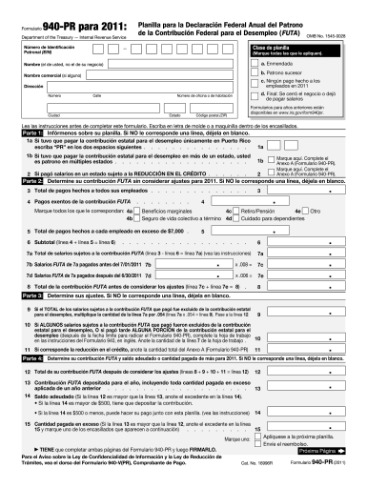Content

This method of taxation aims to fairly tax individuals based upon their earnings, with low income earners being taxed at a lower rate than higher income earners. We’ll start first with the fact that the U.S. tax system is a progressive tax.
Two individuals or companies with income in the same upper marginal tax bracket may end up with very different effective tax rates, depending on how much of their income was in the top bracket. For example, the highest federal income tax rate (37%) applies to a single person earning $539,901 or more in 2022 (in 2023, this will increase to $578,126). People with a taxable income of $600,000 would fall into that tax bracket, but to be clear, they wouldn’t pay a 37% income tax rate on all of their income, only on the portion above $539,901.
State Corporate Income Tax Rates and Brackets for 2023
In this scenario, even though you’re in the 32% bracket, you would actually pay only about 22.4% of your taxable income in taxes ($44,827/$200,000). Taxable income typically includes wages , and other income such as taxable interest, pensions, IRA/401k withdrawals, short term capital gains and others. Taxable income can be complex as the IRS classifies other types of earnings as taxable income as well. So the last bracket and tax rate for the $200,000 salary is 33 percent. To figure how much income is taxed at that rate, we subtract $178,000 from $200,000 for a figure of $21,300. The second to last bracket for the $200,000 salary has a marginal rate of 28 percent.

The U.S. tax code is incredibly long and complex, but fundamentally, it’s based on a simple progressive tax that uses marginal tax rates and tax brackets. Understanding marginal tax rates as the tax on your next dollar can help as you anticipate the net gain after a bonus or a raise. The federal tax brackets and rates are different marginal tax rates charged across the seven tax brackets. They are provided and updated by the International Revenue Service .
What is My Tax Bracket?
Countries such as France and Sweden do not collect high revenues from high marginal tax rates, but from flat rate taxes on the payrolls and consumer spending of people with low and middle incomes. Revenues are also high relative to GDP partly because private GDP has grown unusually slowly, not because tax revenues have grown particularly fast. When looking at the importance of these two tax rates, your circumstance will determine which is more important. If you are trying to determine the impact of a specific change in income such as making a Roth conversion that is in addition to your other income, your marginal tax rate will typically tell you the answer. If you are trying to determine how much of your income to withhold for taxes then your effective tax rate typically will give you a better answer than your marginal tax rate. If the U.S. tax system used a flat tax, the marginal and effective tax rate would be the same.
What is marginal rate?
the rate of tax paid on the last part of a person's or organization's income in a particular period: The law would have lowered the top marginal rate on income earned in the city.
The flat tax rate is a predetermined fixed percentage taxed to all people regardless of their income level. For example, for a taxable income of $63,000 taxed at a flat tax rate of 15%, John is liable to a total of $9,450 in taxes.
Expert does your taxes
Additional taxes may also apply to income, such as FICA and state taxes. But thanks to marginal tax rates, just because you are in a higher tax bracket doesn’t mean you are paying the same rate for all of your income. Instead, you pay taxes on each dollar you earn at the rate of the tax bracket into which it falls. The only people who pay one rate on all of their income are those in the lowest income tax bracket.
You do not What Is A Marginal Tax Rate your marginal tax rate on all of your taxable income . Instead, you pay the lowest tax rate up to the limit of the lowest tax bracket, then the rate of the next lowest bracket up to its limit, and so on until reaching your total taxable income. The best way to understand the economics of a marginal tax rate is to view a real-world example of them!
Effective marginal tax rate
After the Civil War, the https://intuit-payroll.org/ income tax was dropped, at least until 1894. Taxes were still inconsistent after that and depended mostly on what the government expected to spend in the coming year. The big change in U.S. tax history came in 1913 when 42 of the 48 states ratified the 16th Amendment, which increased the taxing authority of the federal government. In case you’re curious, the states that didn’t ratify the 16th Amendment were Utah, Virginia, Rhode Island, Florida, Pennsylvania, and Connecticut.
- The best way to understand the economics of a marginal tax rate is to view a real-world example of them!
- Additional income is taxed at your marginal rate, 12 percent in this case.
- If all of John’s income was taxed at the highest bracket any of income was in, then he would have a $12,500 tax bill.
- The progressive tax system means that people with higher taxable incomes are subject to higher federal income tax rates, and people with lower taxable incomes are subject to lower federal income tax rates.
- Other factors, such as our own proprietary website rules and whether a product is offered in your area or at your self-selected credit score range can also impact how and where products appear on this site.
- The effective tax rate for a corporation is the average rate at which its pre-tax profits are taxed, while the statutory tax rate is the legal percentage established by law.
Are bifurcated into seven brackets based on their taxable income – 10%, 12%, 22%, 24%, 32%, 35%, and 37%. Since the U.S. follows a progressive income tax pattern, as the income increases, so does the income tax. But this doesn’t mean that the people in the highest bracket pay the highest rate on all of their income. For the 2022 tax year , there are seven tax brackets with seven different tax rates. Is the percentage you pay in taxes on the increments of your income that fall into each of the tax brackets.


 Understanding marginal tax rates
Understanding marginal tax rates